Carsten Borchgrevink was a Anglo-Norwegian explorer, best known for being one of the first explorers of Antarctica; he 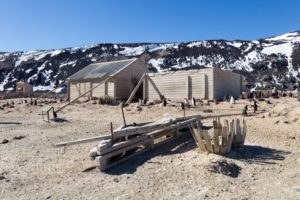 began his exploring career in 1894 by joining a Norwegian whaling expedition, during which he became one of the first persons to set foot on the Antarctic mainland. The first buildings erected by Carsten Borchgrevink at Cape Adare were prefabricated of pine by the Norwegian factory Strømmen Trævarefabrikk. These huts are still standing, and the site is recognized internationally as a significant historic site.
began his exploring career in 1894 by joining a Norwegian whaling expedition, during which he became one of the first persons to set foot on the Antarctic mainland. The first buildings erected by Carsten Borchgrevink at Cape Adare were prefabricated of pine by the Norwegian factory Strømmen Trævarefabrikk. These huts are still standing, and the site is recognized internationally as a significant historic site.
Members of the Northern Party of Scott TerraNova Expedition overwintered at Cape Adare in 1911 and 1912. They erected one hut, which has fallen into ruin today.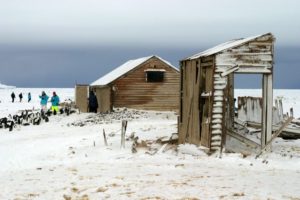
The remains of Borchgrevink’s two huts, as well as those of the Terra Nova Expedition’s hut, have also been designated a Historic Site or Monument (HSM 22), following a proposal by New Zealand and the United Kingdom to the Antarctic Treaty Consultative Meeting. The grave of Nicolai Hanson has been similarly but separately designated (HSM 23).
Expedition’s accommodation hut remains at Cape Adare, under the care of the New Zealand Antarctic Heritage Trust which acts as guardian to this hut and to those of Scott and Shackleton elsewhere on the continent. 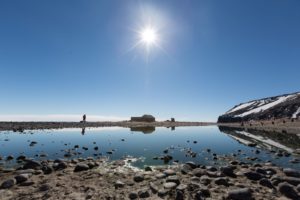 The Borchgrevink hut was designated by the Trust as Antarctic Specially Protected Area (ASPA) No. 159 in 2002. In June 2005 the Trust (the highest level of protection available under the terms of the Treaty), adopted a management plan for its future maintenance and accessibility.
The Borchgrevink hut was designated by the Trust as Antarctic Specially Protected Area (ASPA) No. 159 in 2002. In June 2005 the Trust (the highest level of protection available under the terms of the Treaty), adopted a management plan for its future maintenance and accessibility.
At the light of this evidence, Borchgrevink Huts (ASPA No.159 – HSM 22) located at Cape Adare, Victoria Land, East Antarctica, 71° 18’ 04” South, 170° 12’ 05” East, will be add to the WAP-WADA Directory, under NZL-NEW

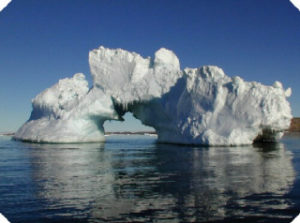 What do you do if you’re a fast-growing city in the desert with lots of thirsty people and little freshwater reserves? Park an iceberg off the coast.
What do you do if you’re a fast-growing city in the desert with lots of thirsty people and little freshwater reserves? Park an iceberg off the coast.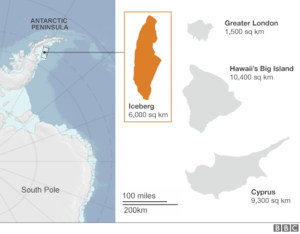 But now its southern end has swung round almost 90 degrees, indicating the berg has been caught in ocean currents.
But now its southern end has swung round almost 90 degrees, indicating the berg has been caught in ocean currents.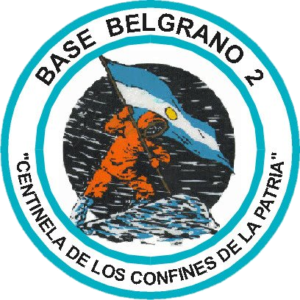 In the Argentinean Base Belgrano II (WAP ARG-Ø6), in the Land of Coats, there is a cave carved in the ice. It is the most southern place of religious worship on the planet, only 800 miles from the South Pole. The Catholic Chapel of “Our Lady of the Snows” serves the base throughout the year. Unlike the other temples that appear in this entrance, the Chapel of Our Lady of the Snows is dug in the ice instead of being a building to use.
In the Argentinean Base Belgrano II (WAP ARG-Ø6), in the Land of Coats, there is a cave carved in the ice. It is the most southern place of religious worship on the planet, only 800 miles from the South Pole. The Catholic Chapel of “Our Lady of the Snows” serves the base throughout the year. Unlike the other temples that appear in this entrance, the Chapel of Our Lady of the Snows is dug in the ice instead of being a building to use.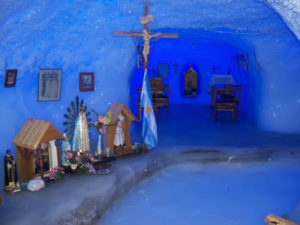
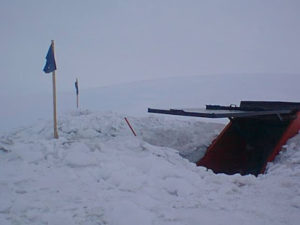

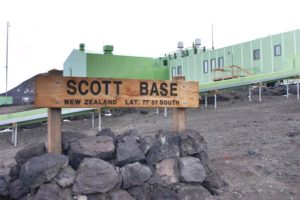
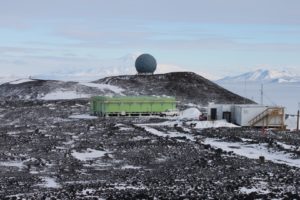 experiments, low frequency radar and aurora studies for universities and other research groups.
experiments, low frequency radar and aurora studies for universities and other research groups.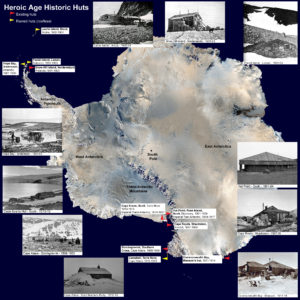
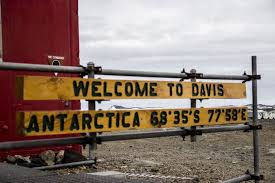 Matthew Gledhill, VK5HZ from a page set at QRZ,com informs that during the Antarctic summer 2018-2019 and Antarctic winter 2019 he will be working at Davis Station (WAP AUS-Ø3) signing VKØHZ.
Matthew Gledhill, VK5HZ from a page set at QRZ,com informs that during the Antarctic summer 2018-2019 and Antarctic winter 2019 he will be working at Davis Station (WAP AUS-Ø3) signing VKØHZ.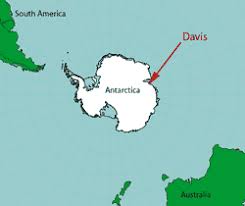 Davis Base is the most southerly Australian Antarctic Station and is situated 2250 nautical miles South-South-West of Perth, on the coast of the ice-free Vestfold Hills, Ingrid Christensen Coast of Princess Elizabeth Land, East Antarctica, in the Australian Antarctic Territory at 68° 34′ 36″ South, 77° 58′ 03″ East, Grid MC81xk
Davis Base is the most southerly Australian Antarctic Station and is situated 2250 nautical miles South-South-West of Perth, on the coast of the ice-free Vestfold Hills, Ingrid Christensen Coast of Princess Elizabeth Land, East Antarctica, in the Australian Antarctic Territory at 68° 34′ 36″ South, 77° 58′ 03″ East, Grid MC81xk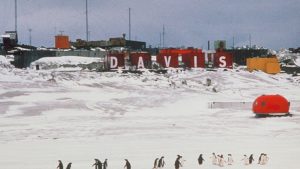 k the event. The Base was named after Antarctic legend, John King Davis, captain of the ships Aurora (1911–14) and Discovery (1929–31). used by Douglas Mawson on his expeditions.
k the event. The Base was named after Antarctic legend, John King Davis, captain of the ships Aurora (1911–14) and Discovery (1929–31). used by Douglas Mawson on his expeditions.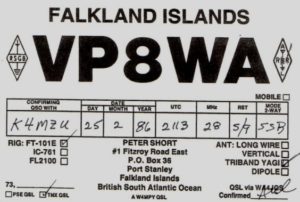 With sincere regret, we learn that Mr. Peter Short VP8WA of Port
With sincere regret, we learn that Mr. Peter Short VP8WA of Port Stanley, Falkland Islands, became a SK 2 weeks ago.
Stanley, Falkland Islands, became a SK 2 weeks ago.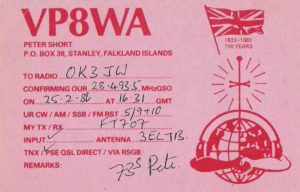 I was the QSL manager for all, but Bob VP8PL and still have the logsfor the following VP8’s: VP8PU, VP8QG, VP8WA, VP8ZV, VP8NJ, VP8QJ and VP8BZL.
I was the QSL manager for all, but Bob VP8PL and still have the logsfor the following VP8’s: VP8PU, VP8QG, VP8WA, VP8ZV, VP8NJ, VP8QJ and VP8BZL.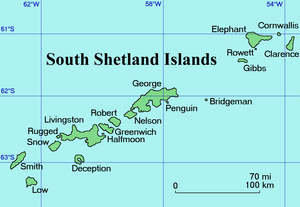 Monday 27 Aug at 20:09:24 a moderate magnitude earthquake at a depth of 64.0 km in open waters did strike the South Shetland Islands, Antarctica. Epicenter latitude/longitude was 61.85° South, 58.5° West
Monday 27 Aug at 20:09:24 a moderate magnitude earthquake at a depth of 64.0 km in open waters did strike the South Shetland Islands, Antarctica. Epicenter latitude/longitude was 61.85° South, 58.5° West The Australian Antarctic Division has paid tribute to a former Chief Scientist, Professor Patrick (Pat) Quilty AM, who died on Sunday (26 August). Professor Quilty led the Division’s science program for more than 18 years from 1980–1999 and published more than 200 scientific papers.
The Australian Antarctic Division has paid tribute to a former Chief Scientist, Professor Patrick (Pat) Quilty AM, who died on Sunday (26 August). Professor Quilty led the Division’s science program for more than 18 years from 1980–1999 and published more than 200 scientific papers.
 contribution to Antarctic science.
contribution to Antarctic science. Thanks to our HAM friend Juan Manuel Pereda LU4CJM, this post reflects the worries that rise to world level!
Thanks to our HAM friend Juan Manuel Pereda LU4CJM, this post reflects the worries that rise to world level!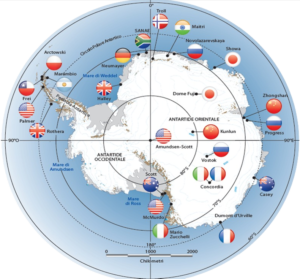 year-long leadership scheme culminating in an Antarctic voyage.
year-long leadership scheme culminating in an Antarctic voyage.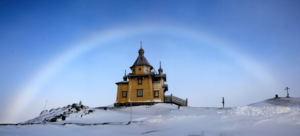 Spring is coming in Antarctica; rainbow above Holy Trinity Church at Bellingshausen Station (WAP RUS-Ø1), King George Island; world’s southernmost Russian Orthodox church.
Spring is coming in Antarctica; rainbow above Holy Trinity Church at Bellingshausen Station (WAP RUS-Ø1), King George Island; world’s southernmost Russian Orthodox church. National Oceanic and Atmospheric Administration scientists have tracked krill populations in the southern oceans for years, but for the first time, they plan to use autonomous computer-driven drones to help with the basic research.
National Oceanic and Atmospheric Administration scientists have tracked krill populations in the southern oceans for years, but for the first time, they plan to use autonomous computer-driven drones to help with the basic research. WAP joins the day of National mourning for the victims of the collapse of the Morandi highway bridge in Genoa.
WAP joins the day of National mourning for the victims of the collapse of the Morandi highway bridge in Genoa.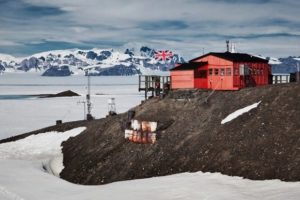 Fossil Bluff lies at the foot of a scree-covered ridge overlooking George VI Sound, which separates mountainous Alexander Island from Palmer Land.This small base located at 71° 20′ South, 68° 17′ West, was established on Alexander Island in 1961 with the purpose of Survey, geology, glaciology and field geophysics. This advanced station, occupied during the winters of 1961, 1962, 1969-75, supplied overland for field parties from Stonington Island (Station E) WAP GBR-Ø5, Adelaide (Station T) WAP GBR-13, and Rothera (Station R) WAP GBR-12. It was closed for the 1976 winter when Rothera (Station R) became fully operational, and now is a forward logistics facility with skiway
Fossil Bluff lies at the foot of a scree-covered ridge overlooking George VI Sound, which separates mountainous Alexander Island from Palmer Land.This small base located at 71° 20′ South, 68° 17′ West, was established on Alexander Island in 1961 with the purpose of Survey, geology, glaciology and field geophysics. This advanced station, occupied during the winters of 1961, 1962, 1969-75, supplied overland for field parties from Stonington Island (Station E) WAP GBR-Ø5, Adelaide (Station T) WAP GBR-13, and Rothera (Station R) WAP GBR-12. It was closed for the 1976 winter when Rothera (Station R) became fully operational, and now is a forward logistics facility with skiway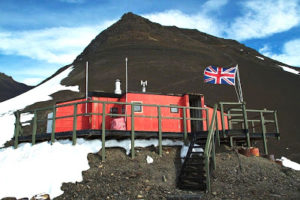 buildings and facilities, at the centre of which lies the main hut, named Bluebell Cottage, houses four people in comfort and forms a transit station for summer field parties
buildings and facilities, at the centre of which lies the main hut, named Bluebell Cottage, houses four people in comfort and forms a transit station for summer field parties The Snipe island 54 ° 57′ South, 67 ° 9′ West was involved into a military incident that took place between Chile and Argentina during 1958 as a result of a disputed border line in the Beagle Channel for the possession of that islet.
The Snipe island 54 ° 57′ South, 67 ° 9′ West was involved into a military incident that took place between Chile and Argentina during 1958 as a result of a disputed border line in the Beagle Channel for the possession of that islet.
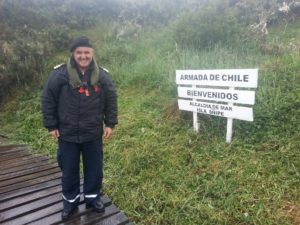 Actually, on this sub-Antarctic site there is a Navy outpost, a Meterological Station and a Lighthouse.
Actually, on this sub-Antarctic site there is a Navy outpost, a Meterological Station and a Lighthouse. The 2018 results of Arctic Challenge , Antarctic Challenge , Polar Challenge ( Arctic Ch + Antarctic Ch ) are available online via :
The 2018 results of Arctic Challenge , Antarctic Challenge , Polar Challenge ( Arctic Ch + Antarctic Ch ) are available online via :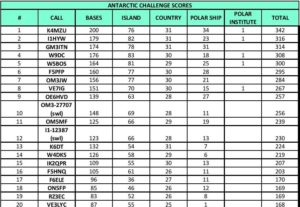
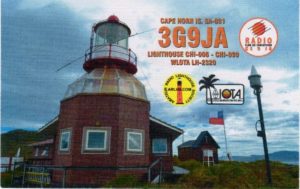 Just to resume the article of last August 1st (the 2016 operation from Hornos Island WAP CHL-2Ø), we are happy to show the QSL of 3G9JA just received by Bob K4MZU, who said: –Good news….very happy today I received QSL confirmation from Dagoberto CE5COX for 3G9JA-.
Just to resume the article of last August 1st (the 2016 operation from Hornos Island WAP CHL-2Ø), we are happy to show the QSL of 3G9JA just received by Bob K4MZU, who said: –Good news….very happy today I received QSL confirmation from Dagoberto CE5COX for 3G9JA-.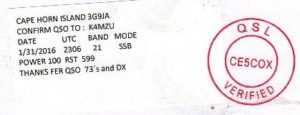
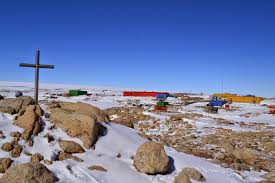 Today on all Australian Stations flags are flying at half mast in honour of Geoffrey Reeve who passed away at Casey in 1979. ( pic aside shows Casey Cross at Reeve’s Hill)
Today on all Australian Stations flags are flying at half mast in honour of Geoffrey Reeve who passed away at Casey in 1979. ( pic aside shows Casey Cross at Reeve’s Hill) Jesuit is the largest single order in the Catholic church, with more than 19,000 members by its own count, and a presence on every continent including Antarctica, where Jesuits have been chaplains and, in keeping with their order’s reputation as the church’s intellectual powerhouse, even scientists. Jesuits have a 60 year history in Antarctica. In 1951 a 27 year-old French Jesuit scholastic (seminarian) and here below are some of them:
Jesuit is the largest single order in the Catholic church, with more than 19,000 members by its own count, and a presence on every continent including Antarctica, where Jesuits have been chaplains and, in keeping with their order’s reputation as the church’s intellectual powerhouse, even scientists. Jesuits have a 60 year history in Antarctica. In 1951 a 27 year-old French Jesuit scholastic (seminarian) and here below are some of them: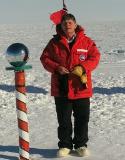 nging students in the classroom, all the while regaling everyone with stories of his adventures—particularly of his trip to Antarctica and his explorations at the bottom of the world
nging students in the classroom, all the while regaling everyone with stories of his adventures—particularly of his trip to Antarctica and his explorations at the bottom of the world Located at 55° 56’ 50” South, 67° 18’ 15” West, Horn Island Meteo Station did enter the WAP-WADA Directory as WAP CHL-2Ø, following the operation of 3G9JA operated in February 2016 (see
Located at 55° 56’ 50” South, 67° 18’ 15” West, Horn Island Meteo Station did enter the WAP-WADA Directory as WAP CHL-2Ø, following the operation of 3G9JA operated in February 2016 (see 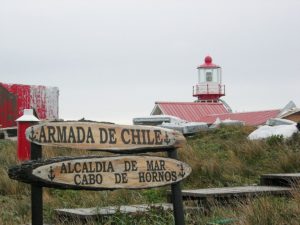 either by land or sea), but on another land point about one mile east-northeast.
either by land or sea), but on another land point about one mile east-northeast.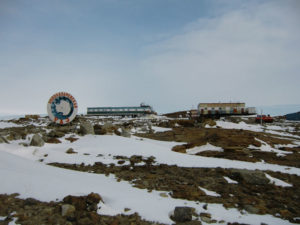 Timofeyev, R3IW will be active on HF Bands mostly on Digi modes as RI1ANW from Novolazarevskaya Station (WAP RUS-Ø9), Antarctica, until March 2019 together with RI1ANL (operated by RW6ACM).
Timofeyev, R3IW will be active on HF Bands mostly on Digi modes as RI1ANW from Novolazarevskaya Station (WAP RUS-Ø9), Antarctica, until March 2019 together with RI1ANL (operated by RW6ACM). Antarctica (not from Bellingshausen Base WAP RUS-Ø1), so make sure to eventually allocate RI1ANF (2018) to Novolazarevskaya not to Bellingshausen.
Antarctica (not from Bellingshausen Base WAP RUS-Ø1), so make sure to eventually allocate RI1ANF (2018) to Novolazarevskaya not to Bellingshausen.
 The pic below, shows L to R: EA5KB, CT4NH, IK1GPG, I1BSN, IK1HSS and the good friend Reg VE7IG.
The pic below, shows L to R: EA5KB, CT4NH, IK1GPG, I1BSN, IK1HSS and the good friend Reg VE7IG. A scientific expedition will next year try to find the Endurance, the ill-fated ship of Antarctic explorer Sir Ernest Shackleton.
A scientific expedition will next year try to find the Endurance, the ill-fated ship of Antarctic explorer Sir Ernest Shackleton.
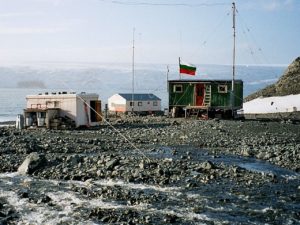 The Lame Dog Hut was erected in April 1988, at 62° 38′ 29″ South, 60° 21′ 53″ West and had been the main building of St. Kliment Ohridski Base until 1998. It is presently the oldest preserved building on Livingston Island, used as radio shack and post office, and hosting a museum exhibition of associated artefacts from the early Bulgarian science and logistic operations in Antarctica.
The Lame Dog Hut was erected in April 1988, at 62° 38′ 29″ South, 60° 21′ 53″ West and had been the main building of St. Kliment Ohridski Base until 1998. It is presently the oldest preserved building on Livingston Island, used as radio shack and post office, and hosting a museum exhibition of associated artefacts from the early Bulgarian science and logistic operations in Antarctica.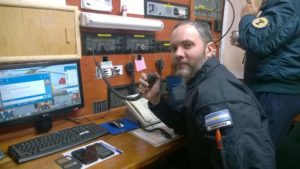 Hereby a couple of pics of Cristian Mauro Fabregat, LU4CMF, operator at Marambio Base as LU4ZS in a site with -50ºC and 100 km/h of Antarctic wind.
Hereby a couple of pics of Cristian Mauro Fabregat, LU4CMF, operator at Marambio Base as LU4ZS in a site with -50ºC and 100 km/h of Antarctic wind.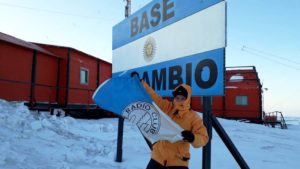
 our atmosphere. But that breakthrough was not entirely satisfying because those neutrinos had rained in uniformly across the sky: There was no indication of the specific objects that may have emitted them—no “point source.”
our atmosphere. But that breakthrough was not entirely satisfying because those neutrinos had rained in uniformly across the sky: There was no indication of the specific objects that may have emitted them—no “point source.”
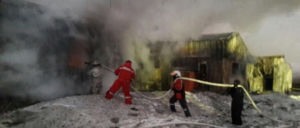 support maritime traffic, collaborate in search and rescue actions, control pollution, support evacuation actions, among other tasks.
support maritime traffic, collaborate in search and rescue actions, control pollution, support evacuation actions, among other tasks. The INACH will send personnel to the area as soon as possible to evaluate the conditions of the Escudero Scientific Base, adjacent to the Maritime Governance. The collaboration between both bases allowed to give viability and safety conditions to the maritime activities of the Antarctic Scientific Expedition. The Bases of the INACH and the Maritime Governance shared since 2011 the use of a sewage treatment plant in order to meet the environmental commitments derived from the Madrid Protocol. The viability of its use should be defined with urgency, since Base Prof. Julio Escudero represents the main Chilean scientific base, with more than 250 scientists passing through it every summer season.
The INACH will send personnel to the area as soon as possible to evaluate the conditions of the Escudero Scientific Base, adjacent to the Maritime Governance. The collaboration between both bases allowed to give viability and safety conditions to the maritime activities of the Antarctic Scientific Expedition. The Bases of the INACH and the Maritime Governance shared since 2011 the use of a sewage treatment plant in order to meet the environmental commitments derived from the Madrid Protocol. The viability of its use should be defined with urgency, since Base Prof. Julio Escudero represents the main Chilean scientific base, with more than 250 scientists passing through it every summer season.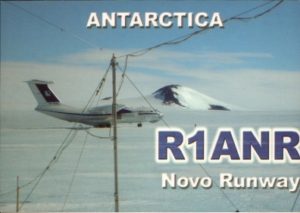 Making an HF contact into Antarctica is always a great DX! One of the very active spot on the Icy Continent is the Blue one Runway (or Novo Runway aka DROMLAN), an Airbase managed by ALCI (Antarctic Logistics Centre International) that works during the austral summer from late October to beginning of March, as a logistics service provider in the Dronning Maud Land Air Network (DROMLAN) since its inception in 2002. It offers a full range of services for the flights from Cape Town to Antarctica.
Making an HF contact into Antarctica is always a great DX! One of the very active spot on the Icy Continent is the Blue one Runway (or Novo Runway aka DROMLAN), an Airbase managed by ALCI (Antarctic Logistics Centre International) that works during the austral summer from late October to beginning of March, as a logistics service provider in the Dronning Maud Land Air Network (DROMLAN) since its inception in 2002. It offers a full range of services for the flights from Cape Town to Antarctica.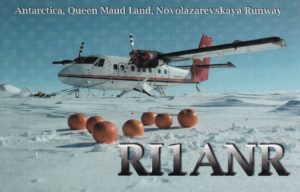 In this very important site, Ham radio activity has never been left out. Three unforgettable operators; OlegSakharov ZS1ANF, Slava Savkin RD3MX and Alex Shmarin UA1PAW have been active from Novo Runway (70° 49’ 31” South, 11° 37’ 41” East) since 2007 giving thousands of Hams a real new one or a great DX, tying up their callsigns to the history of Radio communication from the Antarctic.
In this very important site, Ham radio activity has never been left out. Three unforgettable operators; OlegSakharov ZS1ANF, Slava Savkin RD3MX and Alex Shmarin UA1PAW have been active from Novo Runway (70° 49’ 31” South, 11° 37’ 41” East) since 2007 giving thousands of Hams a real new one or a great DX, tying up their callsigns to the history of Radio communication from the Antarctic. weekend,and it will be managed by LU4AA, foreseeing an operation in 7 MHz band, SSB mode.
weekend,and it will be managed by LU4AA, foreseeing an operation in 7 MHz band, SSB mode.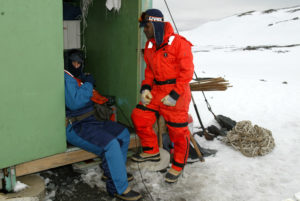 Refuge Emílio Goeldi (WAP BRA-Ø5) is a Brazilian Antarctic summer facility on Elephant Island . It was named after the Swiss-Brazilian naturalist and zoologist Emil Goeldi. The structure, built in 1988, can accommodate up to 6 scientists for up to 40 days and depends both logistically and administratively on Comandante Ferraz Station station (WAP BRA-Ø2).
Refuge Emílio Goeldi (WAP BRA-Ø5) is a Brazilian Antarctic summer facility on Elephant Island . It was named after the Swiss-Brazilian naturalist and zoologist Emil Goeldi. The structure, built in 1988, can accommodate up to 6 scientists for up to 40 days and depends both logistically and administratively on Comandante Ferraz Station station (WAP BRA-Ø2).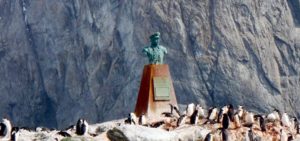
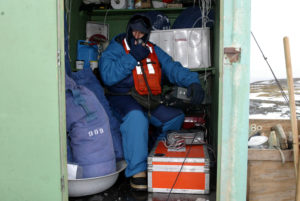
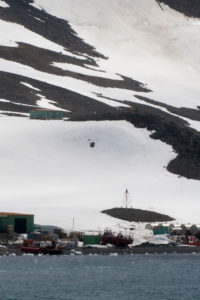 Located at 62° 5’ South, 58° 22’ West, Martel is an inlet forming the northeast head of Admiralty Bay on King George island, in the South Shetlands Islands, off Antarctica. It was charted in December 1909 by the Fourth French Antarctic Expedition under Jean Baptiste Charcot and named “Fiord Martel” after J.L. Martel, a French politician.
Located at 62° 5’ South, 58° 22’ West, Martel is an inlet forming the northeast head of Admiralty Bay on King George island, in the South Shetlands Islands, off Antarctica. It was charted in December 1909 by the Fourth French Antarctic Expedition under Jean Baptiste Charcot and named “Fiord Martel” after J.L. Martel, a French politician. The National Science Foundation (NSF) is accepting proposals from media professionals to visit Antarctica to report on research supported by NSF’s Office of Polar Programs (OPP) through the U.S. Antarctic Program (USAP).
The National Science Foundation (NSF) is accepting proposals from media professionals to visit Antarctica to report on research supported by NSF’s Office of Polar Programs (OPP) through the U.S. Antarctic Program (USAP).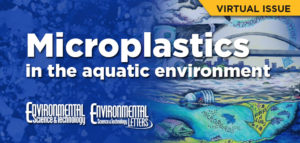 Microplastics and chemicals used in a range of household goods have found their way to Antarctica’s pristine waters and ice caps, research shows.
Microplastics and chemicals used in a range of household goods have found their way to Antarctica’s pristine waters and ice caps, research shows.
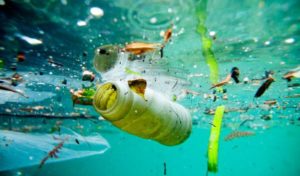 There is growing concern internationally about the increasing presence of polluting microplastics in waterways, with many countries having banned their use in cosmetic products.
There is growing concern internationally about the increasing presence of polluting microplastics in waterways, with many countries having banned their use in cosmetic products.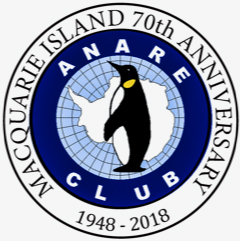 VI7ØMI is a Special Callsign issued to Commemorate 70 years of ANARE (Australian National Antarctic Research Expeditions) for Macquarie Island, which since 1947 have served Australia in the South polar regions. The first ANARE Expedition to Macquarie Island was in March 1947.
VI7ØMI is a Special Callsign issued to Commemorate 70 years of ANARE (Australian National Antarctic Research Expeditions) for Macquarie Island, which since 1947 have served Australia in the South polar regions. The first ANARE Expedition to Macquarie Island was in March 1947. sub-Antarctic Macquarie Island. Australia established its first stations in the sub-antarctic at Heard Island in December 1947 and Macquarie Island a few months later in March 1948.
sub-Antarctic Macquarie Island. Australia established its first stations in the sub-antarctic at Heard Island in December 1947 and Macquarie Island a few months later in March 1948.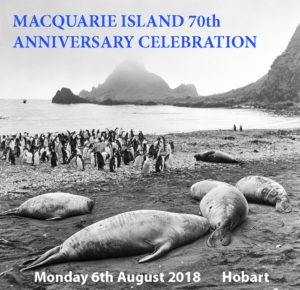 The Special event callsign VI7ØMI (WAP-293) is to commemorate the 70th Anniversary of the establishment of the first ANARE base at Macquarie Island, March 1948. The activity is to raise the profile of the Wireless Institute of Australia (WIA), Amateur Radio in general, ANARE, Parks Tasmania and the Antarctic Research programs globally and within Australia.
The Special event callsign VI7ØMI (WAP-293) is to commemorate the 70th Anniversary of the establishment of the first ANARE base at Macquarie Island, March 1948. The activity is to raise the profile of the Wireless Institute of Australia (WIA), Amateur Radio in general, ANARE, Parks Tasmania and the Antarctic Research programs globally and within Australia.
 It was not until the British Graham Land Expedition of 1934–37 that Adelaide was confirmed to be an island separate from the Antarctic Peninsula. The Research Base at Adelaide Island referred to as Adelaide Base “T” (WAP- GBR-13) from July 1962, was established on 3 February 1961 on the South-West tip of the island. This was in preference to Rothera Point as it had a better skyway for aircraft and less sea ice to hinder access by ship. It was closed when the skyway deteriorated and operations were transferred to Rothera Station.
It was not until the British Graham Land Expedition of 1934–37 that Adelaide was confirmed to be an island separate from the Antarctic Peninsula. The Research Base at Adelaide Island referred to as Adelaide Base “T” (WAP- GBR-13) from July 1962, was established on 3 February 1961 on the South-West tip of the island. This was in preference to Rothera Point as it had a better skyway for aircraft and less sea ice to hinder access by ship. It was closed when the skyway deteriorated and operations were transferred to Rothera Station. The WSL Insitute for snow and Avalance Research SLF is organizing POLAR2018, which will take place in Davos, Switzerland from 15 – 26 June 2018.
The WSL Insitute for snow and Avalance Research SLF is organizing POLAR2018, which will take place in Davos, Switzerland from 15 – 26 June 2018.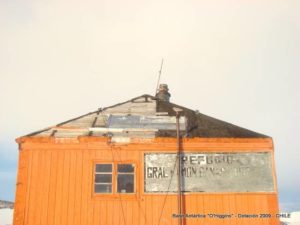 View Point was the location of the British research Station “V”. It was active intermittently with the intention of searching in the survey, meteorology and geology. Located on Duse Bay, Trinity Peninsula, at 63° 32′ 15″ South 57° 24′ 15″ West, the site was selected on 8 Feb 1953, foundations of first hut laid 3 June 1953. A second hut was erected on 20 Mar 1956 and called Seal-catcher’s Arms or View Point Hut ,
View Point was the location of the British research Station “V”. It was active intermittently with the intention of searching in the survey, meteorology and geology. Located on Duse Bay, Trinity Peninsula, at 63° 32′ 15″ South 57° 24′ 15″ West, the site was selected on 8 Feb 1953, foundations of first hut laid 3 June 1953. A second hut was erected on 20 Mar 1956 and called Seal-catcher’s Arms or View Point Hut ,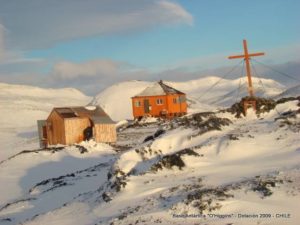 The refuge consists of a cabin enabled as a room and a second machine house, bathroom and storage. It is located about 50 km away from the Chilean base General Bernardo O’Higgins (WAP CHL-Ø2), on which it depends.
The refuge consists of a cabin enabled as a room and a second machine house, bathroom and storage. It is located about 50 km away from the Chilean base General Bernardo O’Higgins (WAP CHL-Ø2), on which it depends.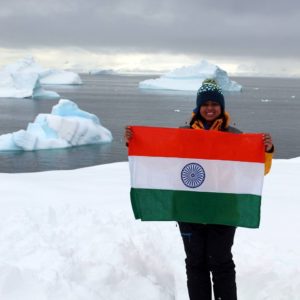 Prathyusha Parakala is the only one from AP and TS to be part of the ClimateForce: Antarctica (CFA) expedition 2018.
Prathyusha Parakala is the only one from AP and TS to be part of the ClimateForce: Antarctica (CFA) expedition 2018.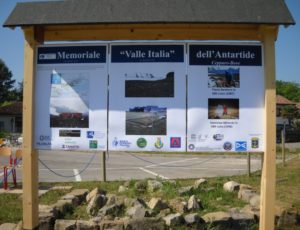 The tireless PH D Julius Fabbri IV3CCT did accomplish the mission to build a Memorial to recall the Giacomo Bove Base (WAP ITA-Ø2) in Antarctica and the 1st Italian Antarctic Expedition (Antarctic summer 1975-1976) led by Renato Cepparo, I1SR,
The tireless PH D Julius Fabbri IV3CCT did accomplish the mission to build a Memorial to recall the Giacomo Bove Base (WAP ITA-Ø2) in Antarctica and the 1st Italian Antarctic Expedition (Antarctic summer 1975-1976) led by Renato Cepparo, I1SR, 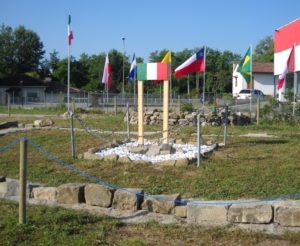 Following the laying of the foundation stone on February 24th 2018, last May 25 when the job was done, a nice ceremony was held at the “A. Malignani” High School of Cervignano (Udine); the inauguration of the Memorial, with Authorities and Students was a great moment of satisfaction even for the young students, Professors and all those who did help the construction of this Memorial which now a reality to be proud.
Following the laying of the foundation stone on February 24th 2018, last May 25 when the job was done, a nice ceremony was held at the “A. Malignani” High School of Cervignano (Udine); the inauguration of the Memorial, with Authorities and Students was a great moment of satisfaction even for the young students, Professors and all those who did help the construction of this Memorial which now a reality to be proud.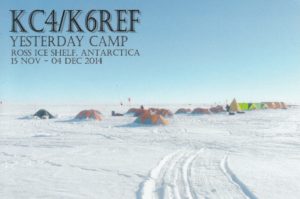 WAP and the Ham’s Antarctic Community are grateful to Dr. Ron E. Flick K6REF, for the New WAP Reference, USA-44 issued after his activity from the US Yesterday Camp.
WAP and the Ham’s Antarctic Community are grateful to Dr. Ron E. Flick K6REF, for the New WAP Reference, USA-44 issued after his activity from the US Yesterday Camp. 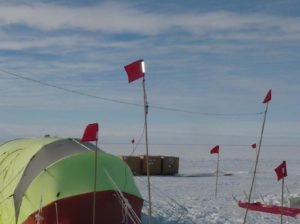 We camped at Yesterday Camp in amazingly cozy mountain tents for 19 days. We had several larger heated work and eating tents as well, and after a few days the cold didn’t seem so bad! The temperature was about -25°C (-13°F) when we arrived, gradually warming to a balmy -10°C (+14°F) by the time we left. We drank some beer outside once during a cold snap, and by the time I got half my can empty the rest was turning into frozen slush!
We camped at Yesterday Camp in amazingly cozy mountain tents for 19 days. We had several larger heated work and eating tents as well, and after a few days the cold didn’t seem so bad! The temperature was about -25°C (-13°F) when we arrived, gradually warming to a balmy -10°C (+14°F) by the time we left. We drank some beer outside once during a cold snap, and by the time I got half my can empty the rest was turning into frozen slush!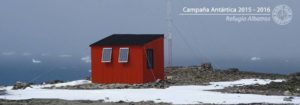 Antarctic shelters are facilities open to all countries, to be used in cases of emergency or to support activities in the field. They are equipped with food, fuel (there are with generators and communication equipment), accommodation facilities and other logistics. On King George Island (aka Isla 25 de Mayo), just to the South of Argentine Base Carlini ,WAP ARG-20 (ex Jubany Base) on Potter Peninsula there is a Special Protected Area (ASPA 132) which extends from Potter cove to Stranger point.
Antarctic shelters are facilities open to all countries, to be used in cases of emergency or to support activities in the field. They are equipped with food, fuel (there are with generators and communication equipment), accommodation facilities and other logistics. On King George Island (aka Isla 25 de Mayo), just to the South of Argentine Base Carlini ,WAP ARG-20 (ex Jubany Base) on Potter Peninsula there is a Special Protected Area (ASPA 132) which extends from Potter cove to Stranger point.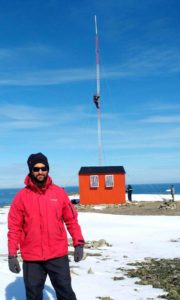
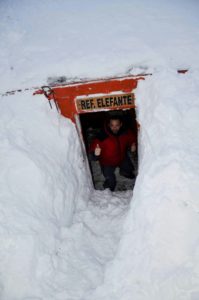 The refuge houses a repeater of analogue / digital VHF of the latest technology powered by solar energy that provides telecommunications support from radio frequency to all the scientific and logistical personnel in the
The refuge houses a repeater of analogue / digital VHF of the latest technology powered by solar energy that provides telecommunications support from radio frequency to all the scientific and logistical personnel in the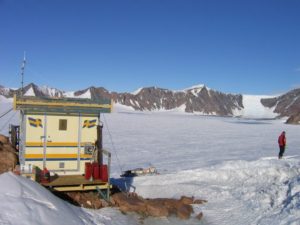 Svea is located in the Scharffenbergbotnen valley in the Heimefrontfjella mountain range, about 400 km from the coast. It was built during the 1987/88 Antarctic expedition and was the first Swedish research station in Antarctica since the Snow Hill station in 1901 and Maudheim in 1949.
Svea is located in the Scharffenbergbotnen valley in the Heimefrontfjella mountain range, about 400 km from the coast. It was built during the 1987/88 Antarctic expedition and was the first Swedish research station in Antarctica since the Snow Hill station in 1901 and Maudheim in 1949. and is an excellent Base for small, transient research teams performing fieldwork in the area. The station, comprising two joined fibreglass modules, is about 12 m2 and has four beds and one pantry.
and is an excellent Base for small, transient research teams performing fieldwork in the area. The station, comprising two joined fibreglass modules, is about 12 m2 and has four beds and one pantry.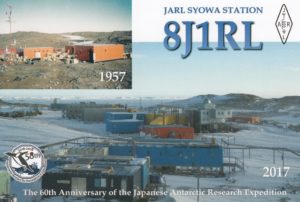 The story of Japan’s involvement in the Antarctic goes back to 1955, when it announced at a special committee on the International Geophysical Year in Brussels that it planned to begin research in the region.
The story of Japan’s involvement in the Antarctic goes back to 1955, when it announced at a special committee on the International Geophysical Year in Brussels that it planned to begin research in the region.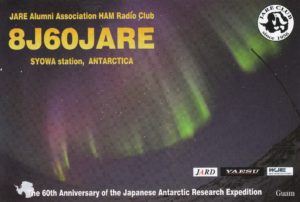
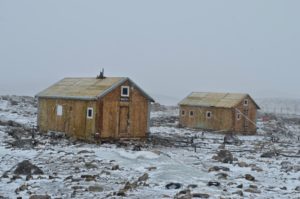 Nanda Devi Hut is a summer shelter in the area of the Indian Maitri Base (WAP IND-Ø3).
Nanda Devi Hut is a summer shelter in the area of the Indian Maitri Base (WAP IND-Ø3).